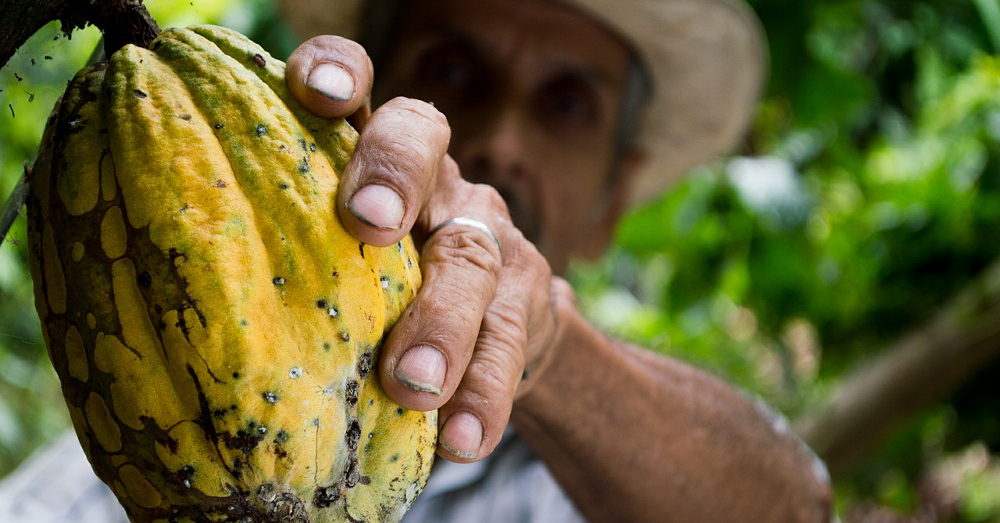
Cocoa, Community and the Forest
One of the biggest challenges to face cocoa farmers in Cameroon is their dependence on the volatile international market prices (the price of cocoa halved between 1992-1993). The government dropped its support scheme after the ’90s price crash, and the farmers’ only choice is to sell to individual buyers who provide expensive loans and give bad prices for the cocoa. In addition the changing climate is making weather and seasons less predictable, and cocoa grown in plantations is highly susceptible to pests and disease.
September 8, 2015 | Source: Greenpeace | by
How can the increasing demand for cocoa help protect forests and improve the lives of farming communities around the world?
Welcome to Konye
The mighty Congo Basin rainforest is spread across five countries and is rivalled only by the Amazon in its vastness. The Cameroonian village of Konye is within the western reaches of the Congo Basin, and is home to around 1,000 inhabitants dependent on both cocoa and the forest for their livelihoods.
The vast majority of the world’s cocoa is produced in smallholdings between 2-4 hectares, like those around Konye. Cocoa farming, the cause of much deforestation in west Africa, may now be one answer to saving what’s left of the natural forests.
Cocoa in Cameroon -– the problem with farming a commodity
One of the biggest challenges to face cocoa farmers in Cameroon is their dependence on the volatile international market prices (the price of cocoa halved between 1992-1993). The government dropped its support scheme after the ’90s price crash, and the farmers’ only choice is to sell to individual buyers who provide expensive loans and give bad prices for the cocoa. In addition the changing climate is making weather and seasons less predictable, and cocoa grown in plantations is highly susceptible to pests and disease. Simply drying cocoa beans in such a wet climate means that farmers often resort to wood-fired ovens, lowering and sometimes negating the value of the beans. Cash crops like cocoa are exported leaving farmers to buy their nutritional needs.
Grown as part of an agroforestry system, cocoa may provide the key for small-scale farmers to break out of the cycle of poverty, increase their ability to cope with climate change and commodity price swings, while protecting primary forests from further destruction.
Ecological approach to farming
Ecological farming encompasses a wide range of modern crop and livestock management systems that seek to increase yields and incomes, and maximise the sustainable use of local natural resources while minimising the need for external inputs. Ecological farming ensures healthy farming and healthy food for today and tomorrow, by protecting soil, water and climate. It promotes biodiversity, and does not contaminate the environment with chemical inputs or genetically engineered plant varieties.
